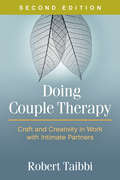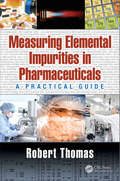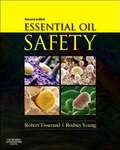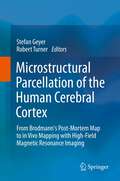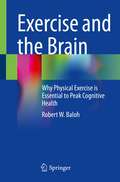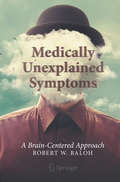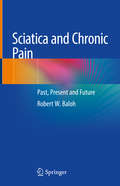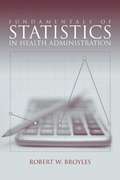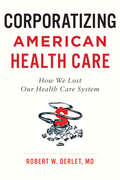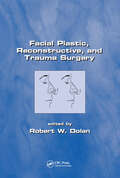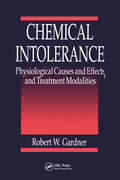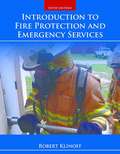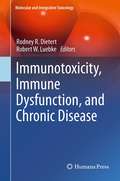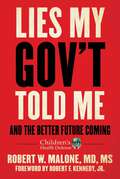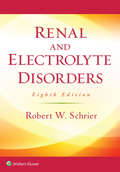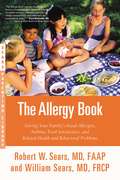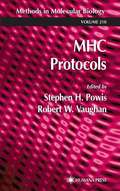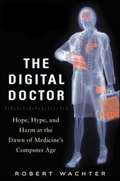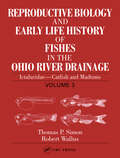- Table View
- List View
Doing Couple Therapy, Second Edition: Craft and Creativity in Work with Intimate Partners
by Robert TaibbiNow thoroughly revised, this practical, user-friendly guide has helped thousands of novice couple therapists and students to navigate the challenges of clinical work with couples in conflict. Robert Taibbi presents effective strategies for rapidly identifying a couple's core issues and conducting each stage of therapy, from the first sessions to termination. Rich with sensitive case material, the book features end-of-chapter exercises that help readers identify and develop their own strengths as practitioners. Appendices include reproducible client handouts that can be downloaded and printed in a convenient 8 1/2" x 11" size. New to This Edition *Three chapters offering detailed treatment maps for common couple problems, with new case examples. *Chapter on the middle stages of treatment. *Increased attention to the all-important opening sessions. *Sharper focus on the three major obstacles to couple success: poor communication, emotional wounds, and differing visions. *Reproducible client handouts explaining key techniques. See also the author's Doing Family Therapy, Third Edition: Craft and Creativity in Clinical Practice.
Measuring Elemental Impurities in Pharmaceuticals: A Practical Guide (Practical Spectroscopy)
by Robert ThomasRecent regulations on heavy metal testing have required the pharmaceutical industry to monitor a suite of elemental impurities in pharmaceutical raw materials, drug products and dietary supplements. These new directives s are described in the new United States Pharmacopeia (USP) Chapters , , and , together with Q3D, Step 4 guidelines for elemental impurities, drafted by the ICH (International Conference on Harmonization of Technical Requirements for Registration of Pharmaceuticals for Human Use), a consortium of global pharmaceutical associations, including the European Pharmacopeia (Ph.Eur.), the Japanese Pharmacopeia (JP) and the USP. This book provides a complete guide to the analytical methodology, instrumental techniques and sample preparation procedures used for measuring elemental impurities in pharmaceutical and nutraceutical materials. It offers readers the tools to better understand plasma spectrochemistry to optimize detection capability for the full suite of elemental PDE (Permitted Daily Exposure) levels in the various drug delivery categories. Other relevant information covered in the book includes: The complete guide to measuring elemental impurities in pharmaceutical and nutraceutical materials. Covers heavy metals testing in the pharmaceutical industry from an historical perspective. Gives an overview of current USP Chapters and and ICH Q3D Step 4 Guidelines. Explains the purpose of validation protocols used in Chapter , including how J-values are calculated Describes fundamental principles and practical capabilities of ICP-MS and ICP-OES. Offers guidelines about the optimum strategy for risk assessment Provides tips on how best to prepare and present your data for regulatory inspection. An indispensable resource, the fundamental principles and practical benefits of ICP-OES and ICP-MS are covered in a reader-friendly format that a novice, who is carrying out elemental impurities testing in the pharmaceutical and nutraceutical communities, will find easy to understand.
Essential Oil Safety: A Guide For Health Care Professionals (Second Edition)
by Robert Tisserand Tony Balacs Rodney YoungThe second edition of this book is virtually a new book. It is the only comprehensive text on the safety of essential oils, the first review of essential oil/drug interactions, and it provides detailed essential oil constituent data not found in any other text. Much of the existing text has been re-written, and 80% of the text is completely new. There are 400 comprehensive essential oil profiles and almost 4000 references. There are new chapters on the respiratory system, the cardiovascular system, the urinary system, the digestive system and the nervous system. For each essential oil there is a full breakdown of constituents, and a clear categorization of hazards and risks, with recommended maximum doses and concentrations. There are also 206 Constituent Profiles. There is considerable discussion of carcinogens, the human relevance of some of the animal data, the validity of treating an essential oil as if it was a single chemical, and the arbitrary nature of uncertainty factors. There is a critique of current regulations. The only comprehensive text on the safety of essential oils The first review of essential oil/drug interactions Detailed essential oil constituent data not found in any other text Essential oil safety guidelines 400 essential oil profiles Five new chapters 305 new essential oil profiles, including Cedarwood, Clary sage, Lavender, Rose, Sandalwood, Tea tree 79 new constituent profiles Five new chapters: the respiratory system, the cardiovascular system, the urinary system, the digestive system, the nervous system. Significantly expanded text
Staub: Natürliche Quellen und Mengen (essentials)
by Robert TrierweilerDieses essential beinhaltet Informationen zu den natürlichen Staubquellen, den unterschiedlichen Entstehungsprozessen und den Mengen der natürlichen Staubemissionen. Die Bildungsmechanismen von Primärpartikeln und Sekundärpartikeln werden beschrieben und die wichtigsten Präkursoren werden genannt. Daneben werden Schätzwerte für die globalen Emissionswerte von Primärpartikeln und Sekundärpartikeln sowie von Präkursoren zusammengetragen.
Microstructural Parcellation of the Human Cerebral Cortex: From Brodmann's Post-Mortem Map to in Vivo Mapping with High-Field Magnetic Resonance Imaging
by Robert Turner Stefan GeyerUnraveling the functional properties of structural elements in the brain is one of the fundamental goals of neuroscientific research. In the cerebral cortex this is no mean feat, since cortical areas are defined microstructurally in post-mortem brains but functionally in living brains with electrophysiological or neuroimaging techniques - and cortical areas vary in their topographical properties across individual brains. Being able to map both microstructure and function in the same brains noninvasively in vivo would represent a huge leap forward. In recent years, high-field magnetic resonance imaging (MRI) technologies with spatial resolution below 0.5 mm have set the stage for this by detecting structural differences within the human cerebral cortex, beyond the Stria of Gennari. This provides the basis for an in vivo microanatomical brain map, with the enormous potential to make direct correlations between microstructure and function in living human brains. This book starts with Brodmann's post-mortem map published in the early 20th century, moves on to the almost forgotten microstructural maps of von Economo and Koskinas and the Vogt-Vogt school, sheds some light on more recent approaches that aim at mapping cortical areas noninvasively in living human brains, and culminates with the concept of "in vivo Brodmann mapping" using high-field MRI, which was introduced in the early 21st century.
Uninsured in Chicago: How the Social Safety Net Leaves Latinos Behind (Latina/o Sociology #14)
by Robert VargasWhy millions of Latinx people don’t access the healthcare system, even in times of needMore than a decade after the passage of the Affordable Care Act, around eleven million Latinx citizens around the country remain uninsured. In Uninsured in Chicago, Robert Vargas explores the roots of this crisis, showing us why, despite their eligibility, Latinx people are the racial group least likely to enroll in health insurance. Following the lives of forty uninsured Latinx people in Chicago, Vargas provides an up-close look at America’s broken healthcare system, and how it impacts marginalized groups. From excruciatingly long waits and expensive medical bills, to humiliating interactions with health navigators and emergency room staff, he shows us why millions of Latinx people avoid the healthcare system, even in times of need. With a compassionate eye, Vargas highlights the unique struggles Latinx people face as the largest racial group without health insurance in the United States. An intimate account of the lives of uninsured Latinos, this book imagines new, powerful ways to strengthen our social safety net to better serve our most vulnerable communities.
Exercise and the Brain: Why Physical Exercise is Essential to Peak Cognitive Health
by Robert W. BalohThis book focuses on the benefits of exercise for prevention and treatment of chronic brain disorders. It is a guide for finding the right exercise routine for each individual. The goal is to show the reader why everyone needs to exercise, especially as we get older. The brain needs physical exercise both for normal health and for preventing and treating diseases common with aging.How much exercise is needed? As we see throughout the book there is no one fits all rule with regard to the amount of exercise required. The key is to make exercise a part of one’s daily routine. The beneficial effect of exercise is transient, lasting days to weeks, so it must be a lifelong pursuit. Can we exercise too much? Anything done in excess can potentially be dangerous but with the common sense approach outlined in this book anyone, regardless of underlying health condition, can find some type of exercise that is safe and effective.
Medically Unexplained Symptoms: A Brain-Centered Approach
by Robert W. BalohDespite the rapid advances in medical science, the majority of people who visit a doctor have medically unexplained symptoms (MUS), symptoms that remain a mystery despite extensive diagnostic studies. The most common MUS are back pain, abdominal pain, headache, fatigue, and dizziness. This book addresses the obstacles of managing people with MUS in our modern day society from both a historical and contemporary perspective.Most MUS are psychosomatic in origin, caused by a complex interaction between nature and nurture, between biological and psychosocial factors. Psychosomatic symptoms are as real and as severe as the symptoms associated with structural damage to the brain. Unique and concise, the book explores the biological and psychosocial mechanisms, the clinical features, and current and future treatments of common MUS. Exploring the unsolved in an accessible manner, Medically Unexplained Symptoms invokes the methodologies of medical science, history, and sociology to investigate how brain flaws can lead to debilitating symptoms.
Sciatica and Chronic Pain: Past, Present and Future
by Robert W. BalohThis highly engaging title offers a concise, state-of-the-art overview of the management of sciatica and chronic pain. Written by a well-known neurologist, the book explores the multifaceted approach to the management of sciatica and chronic pain from many viewpoints, including the pharmacologic and surgical, as well as less orthodox methods. In discussing the many different aspects of pain – including neural networks, neural transmitters and genetic viewpoints – the book also provides a thorough review of how various factors interact to make us perceive pain. Importantly, the neuroscience and medical jargon that goes with the field is minimized by the author by defining terms as they are introduced and providing a glossary with definitions of key terms. Contributing to the unique nature of this highly instructive book, three patients with sciatica and chronic pain are followed serially throughout the text to illustrate important concepts that are discussed. A wide range of charts, figures and tables help clarify new concepts as well. Practical and illustrative, Sciatica and Chronic Pain: Past, Present and Future will be of great interest to a wide audience, including medical trainees and practicing physicians at all stages of their careers. Patients may find the book of significant value as well.
Fundamentals of Statistics in Health Administration
by Robert W. BroylesFundamentals of Statistics in Health Administration fills the needs of both students and practicing health care managers who must apply statistical concepts and methods to real world health care management problems and issues. It covers the fundamentals of statistics in a user-friendly way, with a strong emphasis on practical application in health administration. The text is highly structured with step-by-step instructions throughout. There is an emphasis on Excel and other commonly used programs, although manual calculations are given careful attention as well.
Corporatizing American Health Care: How We Lost Our Health Care System
by Robert W. DerletTracking the evolution of medical care from an individualized small cottage profession to a giant impersonal corporate industry costing Americans over $3 trillion each year.Over the past three decades, the once-efficient American health care system has evolved into a complex maze of monopolies and a racket of bureaucratic checks, approvals, denials, roadblocks, and detours. This shift has created a massive and at times redundant workforce that frustrates patients, as well as physicians, nurses, and administrative staff. Health care costs the United States over $3 trillion each year and consumes over 18% of the country's gross domestic product. That's more than $11,000 for each person in the country each year—more than double what it costs in most Western European countries to deliver equal or even better care.In Corporatizing American Health Care, Robert W. Derlet, MD, traces the progression of health care policy in the United States. How, he asks, has US health care transformed from bedside medicine—a model of small practices and patient-focused care—into corporate medicine, which prioritizes profit and deals with both patient care and outcomes as billing codes? Arguing that the US Congress is the root of the problem, he describes how Congress has failed to enact legislation to prevent corporate monopolies in the health care industry. Instead, corrupted by large campaign donations and corporate lobbyists, Congress has crafted loopholes benefiting corporations and harming people. Drawing on his decades as a practicing physician caring for thousands of patients, as well as his university and medical school teaching experience, Derlet follows changes to both policy and practice across many sectors of health care. Scrutinizing how hospitals work, he also takes a hard look at high prescription drug prices, unresponsive insurance companies, problems with the Affordable Care Act, the growing medical implant device industry, and even nursing homes. Finally, he explains why the dominance of corporations and their lobbyists over health policy means that we now pay more for our care and our medications but have less choice both in what doctors we see and in what drugs we take. Breaking down the complex ABCs of health care to reveal the unscrupulous practices of the health care industry, Corporatizing American Health Care is perfect for both students and general readers who want to understand the changes in our system from the perspective of an actual doctor.
Facial Plastic, Reconstructive and Trauma Surgery
by Robert W. DolanThis text explores reconstructive surgery for congenital, traumatic and post-surgical facial and neck defects. Key chapters discuss wound healing, flap survival and tissue augmentation and the reconstruction of the mandible, tongue, pharynx and maxilla.
Clinical Use of Anti-infective Agents: A Guide on How to Prescribe Drugs Used to Treat Infections
by Robert W. Finberg Roy GuharoyThis book was designed as a reference tool for pharmacists involved in the treatment of patients with infections. It is clinically oriented and designed to help students in all medical disciplines, and especially pharmacists and students of pharmacy who need information on choosing the correct drug, dose, and method of administration of an agent to patients with infectious diseases. Nurse practitioners and clinical microbiologists who need to understand the use of anti-infective agents in patients will also find this volume useful.
Clinical Use of Anti-infective Agents: A Guide on How to Prescribe Drugs Used to Treat Infections
by Robert W. Finberg Roy GuharoyThis second edition of Clinical Use of Anti-Infective Agents provides a comprehensive overview of current approaches to using drugs to treat infections, including historical perspectives, definitions, and discussion of pharmacokinetics and pharmacodynamics and their uses. It includes a detailed explanation of different classes of drugs, outlining their spectrum, pharmacokinetics, side effects, and dosing in clinical settings. This book has been designed as a reference tool for pharmacists, clinicians, nurse practitioners, and clinical microbiologists, as well as a teaching vehicle for students studying infection and patient treatment.Each section includes references allowing for in-depth study of specific agents, Q&As, and illustrative case studies accompanied by commentary on how to approach patients and organisms, optimal methods of making a diagnosis, and prescribing treatment.
Chemical Intolerance: Physiological Causes and Effects and Treatment Modalities
by Robert W. GardnerChemical Intolerance identifies phenolic (aromatic) chemical compounds present in natural foodstuffs, pollens, certain food additives, tobacco smoke, perfumes, air pollution, etc., as nonimmunologic, but pharmacologic activators of allergic reactions in chemically intolerant individuals. Biochemical pathway sequences, with supporting scientific literature, are outlined to elucidate the mechanisms associated with formation of inflammatory mediators (prostaglandins, thromboxanes, and leukotrienes) upon activation by phenolic compounds and other chemical stimulants. The role of these inflammatory agents in respiratory, gastrointestinal, neurological, cardiovascular, and other disorders is discussed. Treatment modalities using precise dosages of selected phenolic compounds are outlined to provide clinicians with an effective means of therapy. The author also shares his own experience and personal findings based on 20 years of research, including his recommendations for therapy.
Reproductive Toxicology
by Robert W. Kapp Rochelle W. TylThoroughly examining the popular and expanding field of reproductive toxicology, this newly revised and expanded third edition provides the latest, cutting-edge scientific developments in this constantly evolving discipline. Reproductive Toxicology's contributors are experienced regulatory agency and Clinical Research Organization representatives w
Introduction to Fire Protection and Emergency Services (Fifth Edition)
by Robert W. KlinoffDesigned for use within courses based on the Fire and Emergency Services in Higher Education (FESHE) Principles of Emergency Services model curriculum, this new Fifth Edition will prepare readers for a career in the fire or emergency services. Introduction to Fire Protection and Emergency Services provides an overview of the fire service, from history and culture to the basics of chemistry and physics, fire protection systems, and strategic and tactical considerations for wildland or structural fires. The Fifth Edition has also been updated to include new or expanded coverage of risk management, Next Generation (NG) 9-1-1, the U.S. Fire Problem from local and federal perspectives, wildfire issues and the impacts of global warming, and much more.
Immunotoxicity, Immune Dysfunction, and Chronic Disease
by Rodney R. Dietert Robert W. LuebkeChronic diseases are the leading cause of deaths worldwide and according to the World Economics Council and the Harvard School of Public Health, the cost of chronic diseases is expected to reach a staggering 48% of global gross domestic product by the year 2030. The urgency of the issue was demonstrated in 2011 when for only the second time in its existence, the U.N. General Assembly brought a health issue to the floor for consideration: chronic diseases. To date, most considerations of the issue have approached the topic from the vantage point that chronic diseases are a myriad of largely unconnected diseases and conditions arising in diverse tissues, organs and physiological systems. This book, Immunotoxicity, Immune Dysfuction, and Chronic Disease, deviates from that prior model. It considers the interconnectivity of chronic diseases with both environmental insult of the immune system and subsequent immune dysfunction and inflammatory dysregulation as the underlying basis for many, if not most, chronic diseases. This change in the perception of environment-immune linkages to chronic disease is significant and has immediate implications both for the prevention of disease as well as for the development of more effective therapeutic approaches. Rather than considering environmental factors and types of reported immune alterations (e.g., depressed humoral immunity) as is common in books involving immunotoxicity, the present book approaches the environment-immune-disease triad from the standpoint of the disease. Each chapter emphasizes one or more specific immune dysfunction-based chronic disease(s) or condition(s) (e.g., asthma, atherosclerosis, multiple sclerosis, lupus) and describes: 1) the suggested environmental risk factors, 2) the underlying immune dysfunction(s) associated with the disease and 3) the overall health consequences of the disease. This book is an early entry for a new Toxicology book series for Springer titled: Molecular and Integrative Toxicology (MaIT). The series will feature detailed research information, but in the context of a more integrative or holistic framework. As part of this framework, the chapters will contain a section on "Key Points" as well as "Recommendations" where appropriate. The goal is to cover the most timely, state-of-the-art issues in toxicology as well as to ensure that the information is maximally accessible for research scientists, teachers, physicians and students. We are particularly grateful to the numerous chapter authors for providing comprehensive and expert disease-oriented contributions. We are also appreciative of their willingness to consider their material not as disparate pieces of what has become a major health crisis, but rather as key pieces in a network of apparently interconnected health challenges.
Lies My Gov't Told Me: And the Better Future Coming (Children’s Health Defense)
by Robert W. Malone**AS SEEN ON TUCKER CARLSON TODAY AND THE JOE ROGAN EXPERIENCE**A guide for the times—breaking down the lies about COVID-19 and shedding light on why we came to believe them. When he invented the original mRNA vaccine technology as a medical and graduate student in the late 1980s, Robert Malone could not have imagined that he would become a leader in a movement to expose the dangers of mRNA vaccines that billions of people have received—too often without being informed of the risks. For voicing opposition to the &“mainstream&” narrative, Dr. Robert Malone was censored by Big Tech and vilified by the media. But he continues to speak out and alert the world to the web of lies that we have all experienced. From vaccine safety and effectiveness to early treatments like ivermectin, to lockdowns, masks, and more, Dr. Malone is the signature dissident voice telling the other side of the story about COVID, the role of corporate media, censorship, propaganda, and the brave new world of transhumanism promoted by the World Economic Forum and its acolytes. What effect did the COVID policies have on lives, livelihoods, and democracies? How is it possible that the lies spread by governments would persist, and that our institutions would fail to correct them? Lies My Gov&’t Told Me takes a hard look at these questions and illustrates how data, information, and psychology have been distorted during the pandemic. Governments intentionally weaponized fear to mold behavior. The media smeared anyone who objected to the narrative. And Big Pharma—aligned with larger globalist interests exemplified by the likes of Bill Gates and the World Economic Forum—had captured the agencies that are supposed to regulate it long before the pandemic began. Dr. Malone explores these perverse connections between Pharma, government, and media, and tells us what can be done about it. With contributed chapters from other leading thinkers, such as Dr. Paul Marik and Professor Mattias Desmet, and drawing upon history, psychology, and economics, Lies My Gov&’t Told Me looks at COVID from numerous angles. Never satisfied with a simple answer or easy solution, Dr. Malone proposes multiple action plans for a better future. Dr. Malone calls on each of us to find our own solutions, our own ways to resist the control of fascist, corporatist, and totalitarian overlords. If we are to step out of the darkness—toward a world that defends the principles of the Constitution, upholds individual rights, and honors free speech—we all must play a part in the transition.
Renal and Electrolyte Disorders
by Robert W. SchrierFor more than 40 years, this well-regarded reference has bridged the gap between basic and clinical sciences for the many disorders associated with electrolyte imbalances and kidney dysfunction. Authoritative and easy to read, the eighth edition has been thoroughly updated by experts in the field to reflect recent developments in renal pathophysiology. Each chapter first introduces normal physiology, then covers each disorder’s clinical features, diagnosis, and treatment. Helpful diagrams, algorithms, and tables further explain the complex concepts.
The Allergy Book: Solving Your Family's Nasal Allergies, Asthma, Food Sensitivities, and Related Health and Behavioral Problems
by Robert W. SearsFrom America's most trusted name in pediatrics, a comprehensive guide to treating and preventing nasal allergies, asthma, food allergies and intolerances, and more. Allergies are one of the most common ailments, causing children to miss school and parents to miss work. Left untreated or unresolved, stuffy noses, itchy skin, and irritated bellies can lead to chronic asthma, eczema, inflammatory bowel disease, and neurological disorders. Today's parents don't just want to treat their family's allergy symptoms ¿ they want to eliminate allergies and prevent chronic and long-term health complications. The Sears show them how. Drs. Robert and William Sears present a science-based approach that has helped alleviate allergies in many of their patients, providing a plan not only for treatment, but also for prevention. A family-friendly resource, THE ALLERGY BOOK offers all the reassurance and accessible, practical advice that parents need to resolve their children's allergies, now and throughout their lives.
When the City Stopped: Stories from New York's Essential Workers
by Robert W. SnyderIn When the City Stopped, Robert Snyder tells the story of COVID-19 in the words of ordinary New Yorkers, illuminating the fear and uncertainty of life in the early weeks and months, as well as the solidarity that sustained the city. New Yorkers were "alone together," separated by the protective measures of social distancing and the fundamental inequalities of life and work in New York City. Through their personal accounts, we see that while many worked from home, others knowingly exposed themselves to the dangers of the pandemic as they drove buses, ran subways, answered 911 calls, tended to the sick, and made and delivered meals. Snyder builds bridges of knowledge and empathy between those who bore dangerous burdens and those who lived in relative safety. The story is told through the words of health care workers, grocery clerks, transit workers, and community activists who recount their experiences in poems, first-person narratives, and interviews. When the City Stopped preserves for future generations what it was like to be in New York when it was at the center of the pandemic.
MHC Protocols
by Stephen H. Powis Robert W. VaughanA collection by leading experts detail of readily reproducible methods for identifying polymorphisms in the human MHC. Described in step-by-step detail to ensure robust and successful experimental results, these techniques provide DNA-based protocols for the study of polymorphism in HLA class I and II genes and in non-HLA HMC genes associated with human disease (TAP1, TAP 2, C2, C4, and TNF- a). The authors also describe methods for accessing HLA sequence data from electronic databases designed to catalog HLA-region genes and their alleles.
The Digital Doctor: Hope, Hype, and Harm at the Dawn of Medicine's Computer Age
by Robert WachterIn this book, Robert Wachter examines healthcare at the dawn of its computer age. He tackles the hard questions - from how technology is changing care at the bedside to whether government intervention has been useful or destructive - with clarity, insight, humour and compassion, to present what he believes is, ultimately, a hopeful story.
Reproductive Biology and Early Life History of Fishes in the Ohio River Drainage: Ictaluridae - Catfish and Madtoms, Volume 3
by Thomas P. Simon Robert WallusThis series fills immense gaps in knowledge of issues related to early life development of fishes in the Ohio basin. Volume III addresses the developmental and morphological issues of catfish and madtoms. This volume describes the characteristics of the Ictaluridae family, and provides a detailed pictorial guide. Subtopics within each species description includes range, distribution, occurrence, spawning, eggs, development, ecology of early life phases, and more. This book serves as both a guide to help identify individual larval fish and as a reference for environmental managers concerned with the overall health of the ecosystem that they are monitoring.
